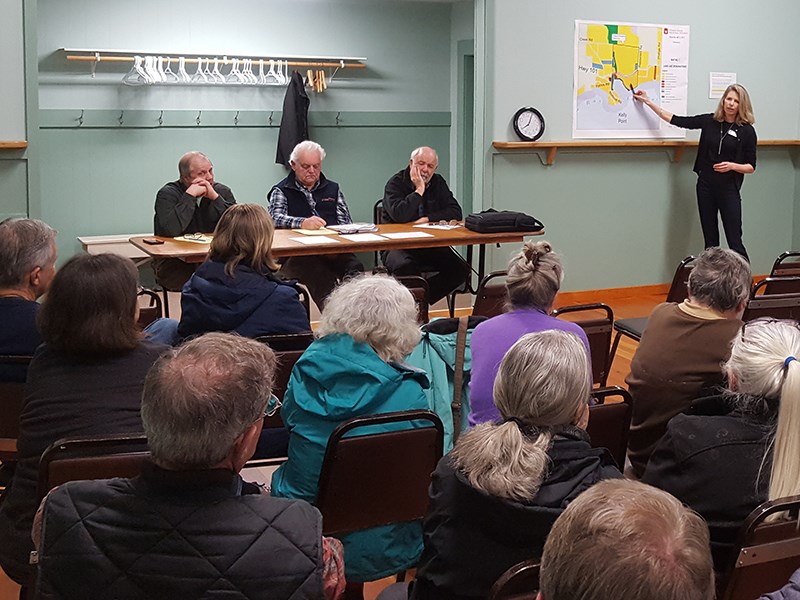Public engagement into a Powell River Regional District bylaw change that could impact the future of Sandstone Creek Properties closed on February 7.
Sandstone is a proposed rural neighbourhood development on 190 acres of land south of the city near Lang Creek, between Brew Bay Road and Weldwood Road, and including Mahood Beach.
Approximately 50 people attended the open hearing at Lang Bay Hall to voice their concerns on where Sandstone would be located to Electoral Area B director Alan Rebane, Electoral Area C director Colin Palmer and Electoral Area A director Patrick Brabazon.
The hearing was not a conventional town hall with questions and answers, and the directors could not, by law, engage with the public.
The environmental impact, particularly on Lang Creek watershed, and the density of the project was of major concern to many of those in attendance.
Powell River Salmon Society vice president Ed Oldfield expressed serious concerns that the society’s work at Lang Creek salmon fishery could be wiped out.
“You can't have a mistake on this development without it costing our environment,” said Oldfield.
It is too early in the bylaw amendment process to address many of the objections raised, according to regional district director of planning Laura Roddan.
“A lot of the concerns are about the development and the development concerns will get addressed at the next stage if the bylaw is adopted,” said Roddan.
Approval of the bylaw would clear the way for the property owner to apply for a subdivision into land-use designations, including low density and suburban residential, institutional, commercial, and parks and greenspace. Plans call for 75 residential lots ranging from one to three acres in size.
The subdivision application would trigger environmental, wildlife, transportation, archaeological, geotechnical, riparian and water assessments.
“The results to all of the assessments will inform what the density is on the property, what the setbacks are from the creek and what the setbacks are from the high-tide line,” said Roddan.
To some residents, proposed changes to the Area C Official Community Plan were written to accommodate the development plan.
“The bylaw appears to be what the development plan required,” said Janet May, who attended the hearing and has declared her candidacy for Electoral Area B director, opposing alternate director Alan Rebane in the fall general election.
“The development plan was presented to them by the proposed developers,” said May. “The bylaw appears to match the minimum legal requirements to enable the developer to do what they want to do.”
Sandstone applied for the bylaw amendment and there is no regional regulation that requires that, according to Roddan.
“They want to do the right thing,” said Roddan. “That's why they applied for the OCP amendment. They could turn around tomorrow and put a factory on the industrial lands and clearcut the whole top half if they wanted to, and there is nothing to stop that from happening.”
Concerns of speakers and written submissions will be summarized, analyzed and included in a report to the regional planning committee in March, when a recommendation will be made to the board.



